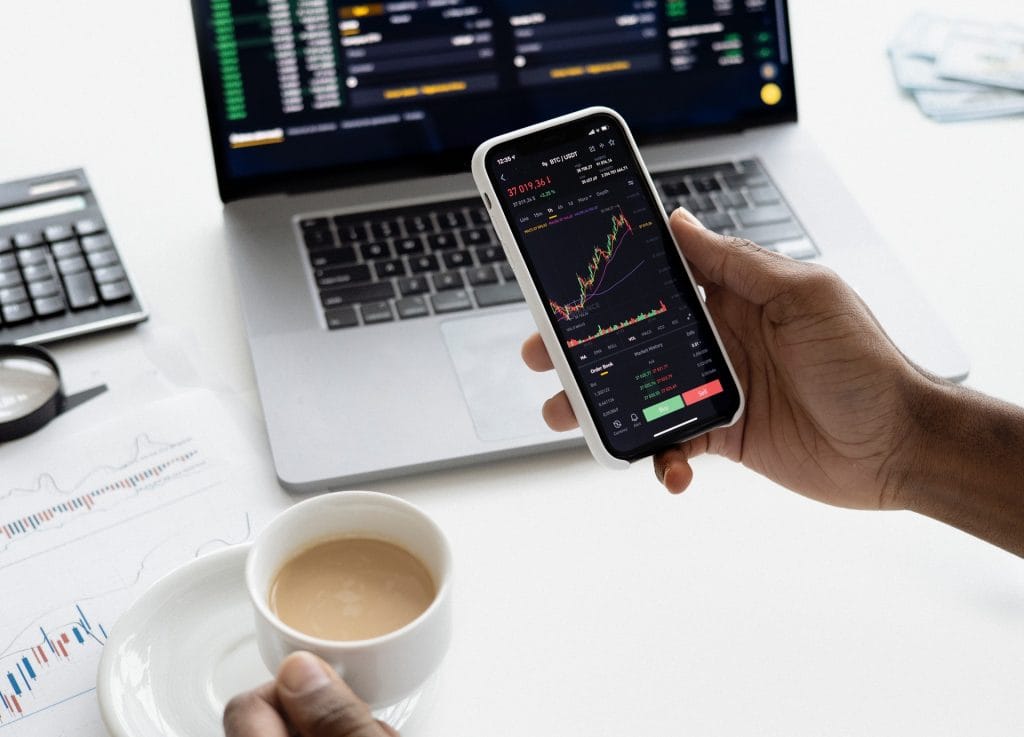Month: June 2021
The Template
This template will combine and take you through the steps we have covered in this Fundamental Series:
- How Much Do I Invest?
- Portfolio Risk Profile
- Understanding the risk of investments and;
- Building your portfolio based on risk profile
- Tracking Your Investments With Google Sheets
- When to sell and methods of selling
Find the Link below – note you will have to make a copy if you click the 2nd button. I would also strongly recommend using a real computer and not a phone (just like for all things worth doing).
All the best with your investment endeavours and reach out if you have any questions.
Future Posts
I plan to cover more areas in this area such as Cryptocurrencies, Trading Cards and Other Investments so watch this space. Below is my favourite tennis player and collector coin which is actually quite a lucrative investment!

Yes, your broker website like CBA will track your performance very well. However, the things it won’t do well it remind you
- when you might want to sell / partial sell your shares
- The current risk profile of your portfolio, or
- An idea of what sectors or markets you are currently diversified
To manage this, I would suggest to use your own personal tracking similar to what I have provided in a template below: Investing Fundamentals: Track Your Investments With Google Sheets
Notes for using such a template
- You will need to ensure your portfolio is updated from your Broker Site (e.g Commsec)
- Each time you make a purchase or sell, update the appropriate columns (the first few until you hit ‘Cost’)
- Personal Input will need to be manually input (unless you use the full template – releasing in coming days)
- Google Prices and statistics will update automatically when the market is open and every 10 or so minutes
If you are unfamiliar with Google Sheets – BECOME FAMILIAR WITH GOOGLE SHEETS!
The next and FINAL piece of this series will be bringing it all together with, you guessed it – A Google Sheet Template – Full Starter Template And Review
So you’ve invested your money, some are up, some are down. How do I know when to buy more, keep holding or sell? This article aims to provide you with some guidance through the ups and downs of your portfolio.
Take your wins when you can
It sounds simple – if a share has had a dramatic increase in share price due to an announcement and jumps up anywhere above 30% in a single day, it could be worth re-evaluating and selling. Especially for shares in which you have taken a punt on without significant amount of research. Recently, off the back of a solid announcement from the company I’ve had a win with one of my holding ASX:COD (a copper explorer I took a gamble on a few months ago after hearing it could be a winner from a friend). The share one more shot up over 150% in the morning, without any science and worried the potential gains could erode away, I set the sell price at $1.00 which would earn me roughly 300% – a very respectable amount I am happy to take.
It’s not uncommon though for the share to keep shooting through the roof (which is the risk you take when selling) or to plummet back down if the market overreacts to good news. I was recently caught up in the hype of one of my other investments ASX:88E, where I was up roughly 800% at one point, they then let out an announcement of bad nature and plummeted 80% on the Monday at open. Although still up overall, if I had sold earlier, I could have secured much better gains.
Selling at any price on the way up would have yielded much better gains and it’s really impossible to know what the peak is or see the future. So be happy if you can take your gains where possible, if you really believe there’s much more potential, keep holding. Another strategy I like is:
Partial Sale
This is probably my favourite method of taking acceptable gains as well as still riding the wave if you have good believe or just want to keep some risk in the portfolio. Example with ASX:88E above.
- Watch the share sky rocket up to maybe 200-300%,
- ‘This is amazing, I have seen them release good news thus far, but there’s still some uncertainty over the samples’.
- I recognise I have made good gains, but it could be better. However there is risk that it could all turn into nothing….
I could:
- Sell it all and take the win
- Partial Sales: Sell my original Purchase amount ($) and keep holding the remaining
- Hold the entire amount – go go go
With the Partial Sales, you would limit any losses that could be made in the future. Even if the company goes bankrupt, you will have pulled out the initial amount. Great!
Even as the price climbs higher (like 600-800%), you can keep selling part of your investment realises gains and gains. If we did a strategy like this for 88E potential gains would be much higher than what I actualised (100%). Doing this strategy would potentially yield $2,500:
You can see how powerful the partial sale can be in this illustration. Be cautious and watch the shares (daily) to look for spikes and opportunities for potential sales.
Buy more when the price drops (AKA Averaging Down)
In essence, if you have some shares you really believe in could be a future winner however they are currently at a loss (in the red), you can thinking of this another way as ‘oh, I can buy more as this share will surely increase in value over the next few years. I’m getting a bargain! I should buy more‘.
You can read a full article on this here but that is the true crux. Example would be COVID, I should’ve put everything I owned in shares in March 2020 and I’d have paid off my mortgage 3 times over!
Tax Implications
If you are serious, go see your accountant, tax or financial adviser.
The main thing here I think is the 50% CGT discount. Link to ATO website.
Simply put, if you are holding an investment and it’s been a full year, any gains you get may be discounted by 50% for tax purposes. So IF you are sitting on a gain and were thinking of selling, it could be worth waiting a few extra days to get this discount.
Next time
- Tracking your investment portfolio in Google Sheets with automatic updates
ETFs
With so many ETFs of all shapes and sizes now available on the market, finding the right one to invest in can sometimes be a difficult choice for investors. Here are a few suggestions on what to look out for when choosing ETFs.
- Align to allocation: First and foremost, finding the right ETF should depend on your own investment objectives, portfolio asset allocation plan and personal priorities.
- Know your provider: Apart from market forces, how well an ETF performs can also depend on how it is managed. Investing with a reputable fund manager with experience and a good track record of delivering index performance is important.
- Compare the costs: Costs are one of the more straightforward ways to compare ETFs and can be particularly important when you are selecting between sometimes similar products.
Ordinary Shares
There are usually 2 schools of thought with choosing shares
- Fundamental analysis evaluates securities by attempting to measure their intrinsic value.
- Technical analysis differs from fundamental analysis, in that traders look to statistical trends in the stock’s price and volume.
Being a bit of a cynic in this area of late, I think a lot can also be put down to common sense on macro environments. you can try using some ‘deductions’ such as ‘Lithium prices will go up in the next few years due to x, y, z’. With that in mind, find some shares in those sectors.
An example I’m hoping to bank on is corona virus on the Travel and Flight industry. Hoping they recovery in the medium term should yield some results as the share prices are currently at very low rates compared to pre-COVID19.
Penny Stocks and Micro Caps
Much of this is fortune telling, but if you’re willing to put in a lot of time and research and have a knack for geology, you could do well with the mining / exploration companies. Otherwise you can try using some ‘deductions’ such as ‘Lithium prices will go up in the next few years due to x, y, z’. With that in mind, look at some micro cap companies exploring for these precious metals. Look into the announcements and other macro factors look for things such as
- Can they survive on their current cash balance?
- Are their deposits likely to yeild solid results? Could compare to other explorers in the area.
- Always be conscious of the price of the underlying asset e.g Gold Explorer prices will go up if the intrinsic price of gold also goes up.
List of ASX Companies by Sector
‘Professional’ Micro Cap Investors – Next Investors
You can also see their current portfolio
Crypto Currency
To be honest, it’s all guess work here.
I have heard this guy is good though.
I have created the below cheat sheet to get an idea of the risk profile of investments. These are not ALL investment types, but the ones I want to discuss.
Cash
This is essentially 0 risk. Hold your cash (emergency funds + funds not ready to be invested or holding for other opportunities)
Property
Can be a good way of earning capital growth (Capital growth is an increase in the value of an asset or investment) Through appreciation of house prices or income through rent (or both!). However the initial investment for one of these warlocks these days is so high (in Sydney anyway) that we’ll tackle this in another post. These kinds of investments could help you build and make that deposit, so read on!
Types of Shares – Ordinary Shares, ETFs & Penny Stocks
Yes, they are all the same things but slightly different. In terms of variety of risk, shares have the largest spread. They can range from low to high, it all depends on the company you chose to invest in. Before we go into this, let’s understand ETFs.
- Ordinary Shares – this is a SHARE in a company. So if the company does well, so will you (in theory).
- ETF – An exchange traded fund (ETF) is a basket (or bunch) of securities that trade on an exchange, just like a share, so when you own a share of an ETF, you will own a little bit of all shares in the ETF.
- Penny Stocks – A penny stock typically refers to the stock of a small company that trades for less than $1 per share and hence the name penny stock. They seem very cheap and you can usually buy a lotttt of shares and then small changes in the price of the shares can make you very rich or poor.
How do you differentiate between high and low risk?
Think – Risk types. A good detailed document can be found here. But I think they are quite easy to understand with some common sense.
- Volatility risk: how big the swings in price can be. I.e penny stocks and mining / exploration shares can have very high fluctuations. If good news comes in boom, if not, bust.
- Timing Risk: Think COVID. Airlines are struggling right now so the share price is probably low (or is this an opportunity?).
- Legislative Risk: i.e Cannabis could be announced as legal
- Currency and Foreign Exchange Risk: Many companies operate world wide. If they have significant operations in Japan and an earthquake happens – potential busto.
- Sector or Market Risk: Technology / mining / Travel / Gold could boom. Which market is your share in?
Generally, with higher risk comes higher (potential) return
I think that’s enough said here.
- Barriers to Entry & Effort
Barriers to Entry here is essentially how much money you need to get started in this space. At least with CBA the minimum is $500 to purchase a parcel of shares. Whereas a house is roughly going to set you back 10% of the purchase price. (Kel’s friends recently purchased a $2m house, so that’s at least $200,000 just to get started!). It may also be hard to set up trading accounts, although it’s very simple see my – Shares Part 1 – Setting Up A Share Trading Account. - Effort: How much time do you want to spend monitoring and investigating your investments? With MOST ETFs, you can generally just sit back and trust that someone smart is doing the hard work for you (that’s why they take the management fee). Otherwise you might find it fun to research penny stocks and play ‘Where’s the Gold’ and get some Lucky 88!
Crypto Currency
Who even knows with this stuff – it’s literally gambling so if you want to spice it up a bit – I suggest Compound – for no reason other than I saw it somewhere in my crappy newsfeed.
Next in the series we’ll look into:
- Resources on how to find and chose Shares – blog to come soon
- How to buy and sell through your bank or broker – Shares Part 1 – Setting Up A Share Trading Account.
- Tracking your investments – blog to come soon
Create A Trading Account
Step 1: Go to Commsec and click ‘Join Now’
Step 2: Click ‘Open an Account’ and go through the prompts
Step 3: Open a CDIA (or trade with your bank – not recommended). You will need your your ID – See details below.
Step 4: Confirm details via email
Step 5: You’re ready to trade – however you’ll need to put some money in your trading account (CDIA).
So I have an account, now what?
I would recommend reading my next blog – which I haven’t written yet. Also familiarise yourself with my previous post – Beginners Guide to Investing (Shares, Crypto and Trading Cards and more) and How much money should I be investing?
Other Details
Caveat 1, each bank is slightly different, but generally the same. I use Australia’s largest retail bank – Commonwealth Bank of Australia, therefore will use Commsec as their trading platform.

Full disclosure, I am not advertising or sponsored by CBA.















